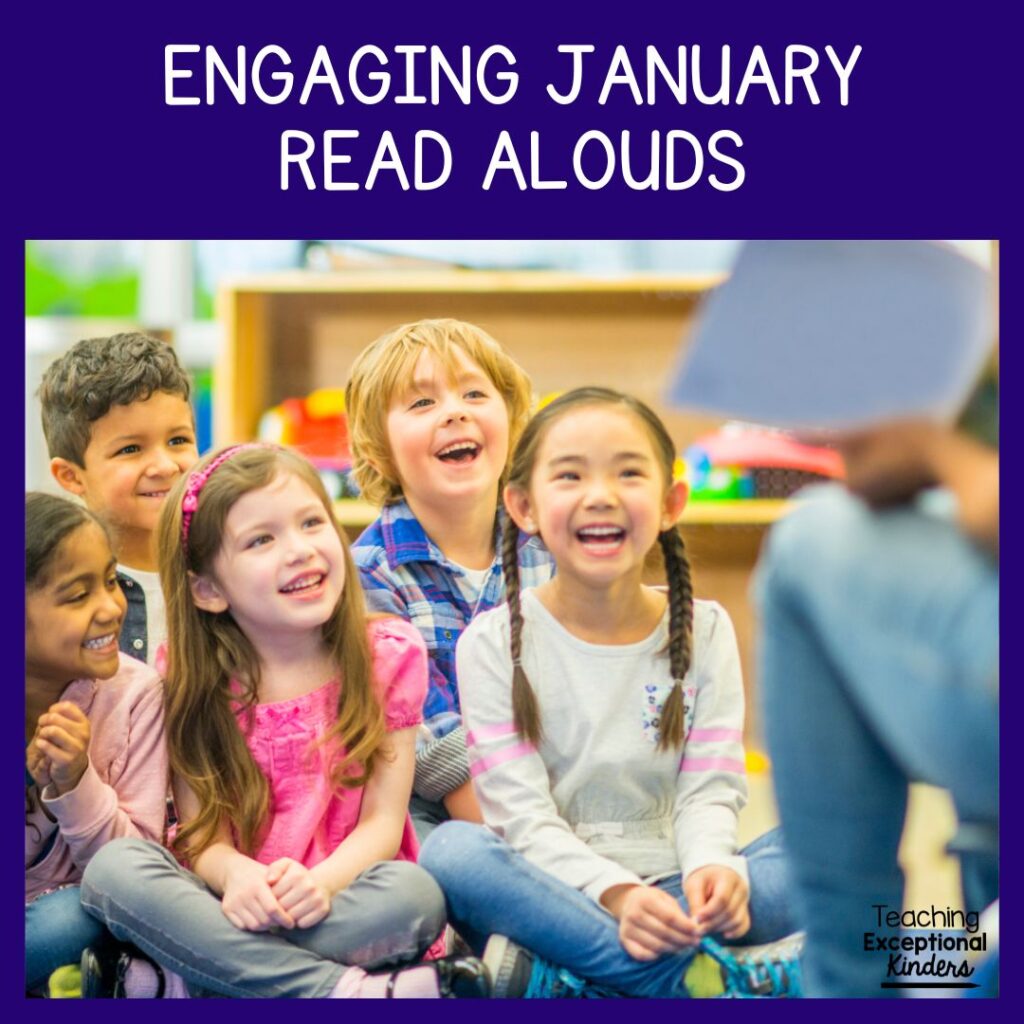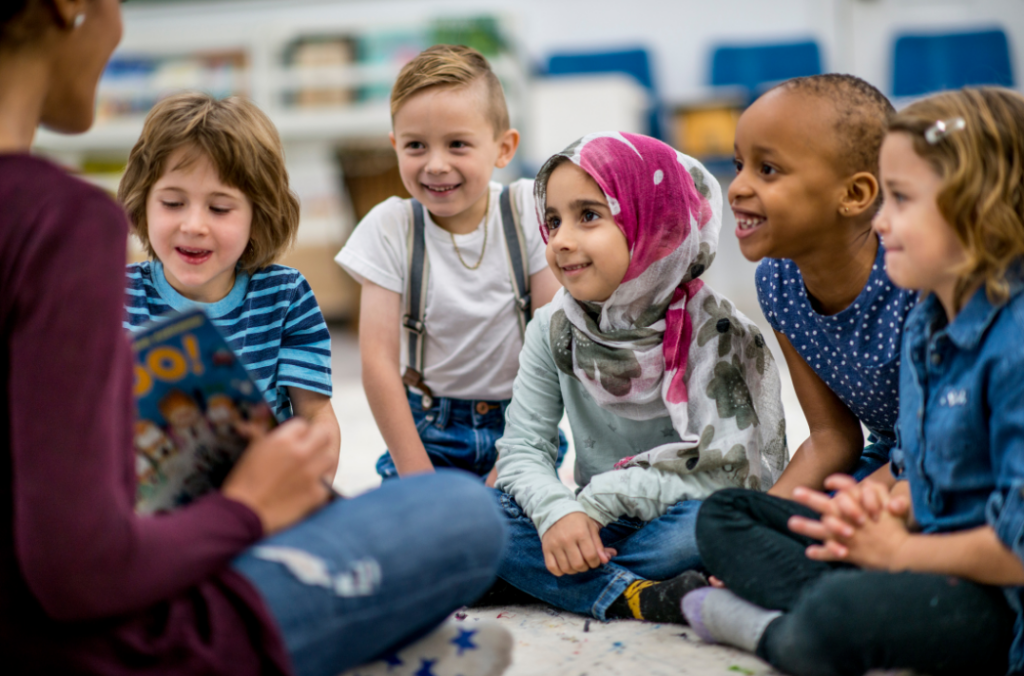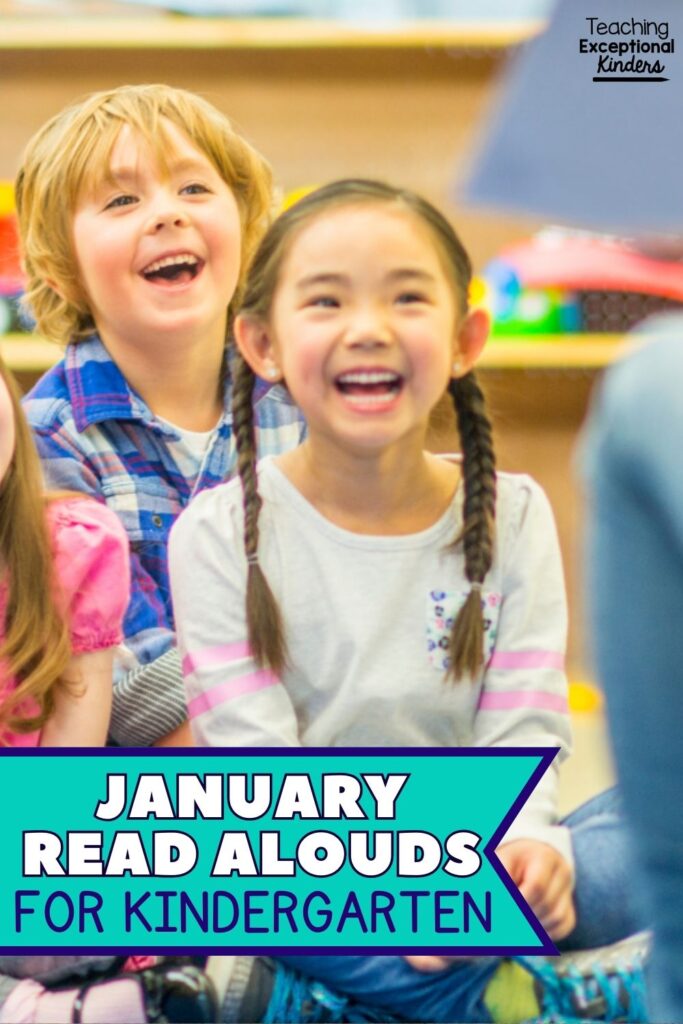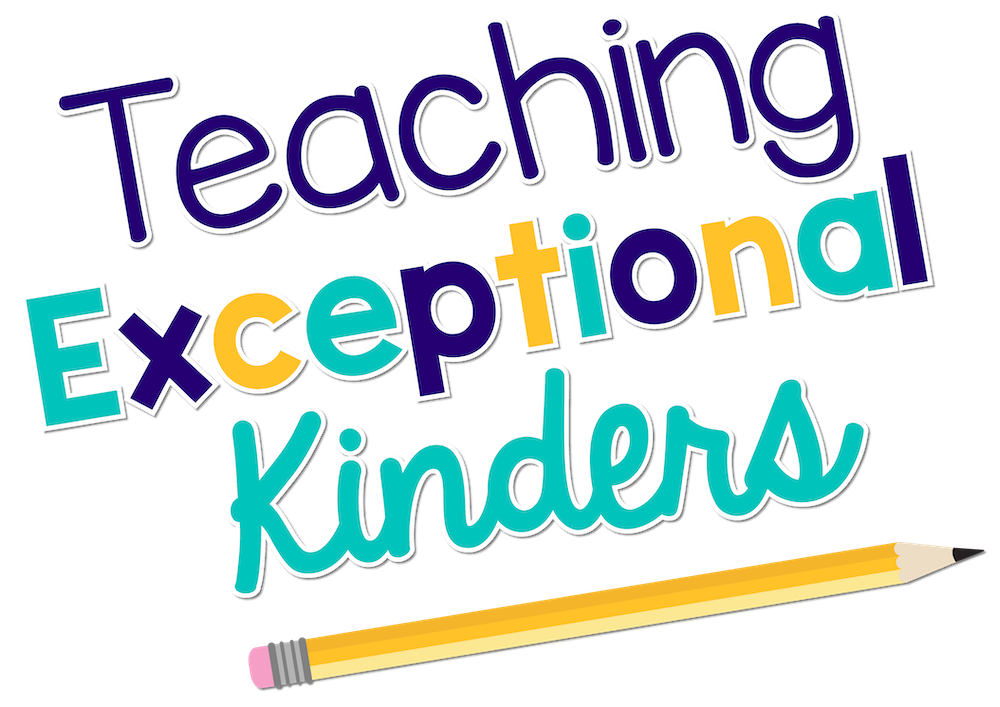Engaging January Read Alouds for Kindergarten
Read alouds are such a great way to help your students ease back into the learning routine after winter break. If you’re on the hunt for the perfect winter books to read with your students, check out my favorite January read alouds for kindergarten. Your students will love these fun winter books!

This post contains affiliate links. As an Amazon Associate, I earn from qualifying purchases.
9 Winter Read Alouds for January
There are so many topics that you can focus on with your read alouds in January that it can be hard to narrow it down! My top three topics for read alouds for January are:
- Snow and Winter Weather
- Arctic Animals
- Hibernation
These are great for January because you can find a nice mixture of both fiction and nonfiction books to help your students learn about and enjoy these topics.
1. “The Mitten” by Jan Brett
This classic winter story is a great read aloud for January, in which a lost mitten becomes a winter hideaway for many forest animals. I love Jan Brett’s version of this folktale because her illustrations tell a story within the story. Students can practice making predictions about which animal will go inside the mitten next based on the illustrated frame on each page. This book is also perfect for sequencing and retelling practice!
2. “The Hat” by Jan Brett
In this book, Hedgie the hedgehog gets stuck in a stocking and is worried about not being able to fit back into his den. The book has a fun surprise at the end, when the owner of the stocking helps Hedgie and realizes it was more than just the stocking that was missing! This story is another great opportunity to introduce animal vocabulary and discuss winter weather.
3. “The Snowy Day” by Ezra Jack Keats
This classic book takes place on a snowy day in the city. As you read the story with your students, you can point out elements of living in the city. Many of your students might not be familiar with what it’s like to live in an apartment in a big city, so this is a great way to spark discussion! You can also have students share about how they would choose to spend a snowy day.
4. “A Silly Snowy Day” by Michael Coleman
Kindergarten students can often relate to the young tortoise in this story who doesn’t want to go to sleep! Shelley the tortoise wants to experience the joy of winter weather instead of needing to hibernate. Shelley decides to spend some time out and about in the cold with other animals, but eventually finds the best place to spend the winter. This story is a great transition into discussing hibernation with your students.
5. “The Snowy Nap” by Jan Brett
Hedgie the Hedgehog is back in this cute story! Just like the tortoise in “A Silly Snowy Day”. Hedgie feels like he’s missing out on all of the fun when he hibernates. As Hedgie walks around the farm one last time before hibernation, he talks with all of the other animals on the farm about what he’s missing during the winter weather. This is another fun story for students to use the illustrated frames to make predictions about what animal Hedgie will talk to next.

6. “Hibernation Station” by Michelle Meadows
When you’re ready to talk about hibernation in more detail, you can start with this fiction book that introduces other animals that hibernate for the winter. The illustrations in this rhyming book are beautiful and engaging, which grabs your students’ attention as they discover animals that spend their winters hibernating. Your students will love to see how cute the illustrated animals look in their pajamas!
7. “Why Do Animals Hibernate?” by David Martin
When your students are ready to learn more about the science of hibernation, you can switch gears and read nonfiction picture books with them. This nonfiction read aloud by David Martin is a great way to teach students more about the process of hibernation. Kindergarten students often have a lot of questions about the specifics of hibernation, and this book is a great starting point for answering those questions. Plus, the animal photographs in this book are fun for students to look at!
8. “National Geographic Readers: Arctic Animals” by Jennifer Szymanski
It’s not just hibernating animals that students like to learn about in January! You can take some time to introduce students to arctic animals. National Geographic readers always have great examples of nonfiction text features, and this book is no exception! The vivid photographs and captions really grab students’ attention as you read about arctic animals. Also, be sure to point out the table of contents and glossary!
9. “A Day in the Life…” Series by Katie Marsico
The final book in this list is actually a series of several nonfiction books! The series dedicates one book to each of a variety of different animals that your students will love to learn more about. Some of my favorite animals for January include the arctic fox, reindeer, narwhal, and polar bears. Each book has plenty of nonfiction text features, like bold vocabulary words, a glossary, and a table of contents. Your students will enjoy the chance to take a closer look at each of these animals as they learn fun facts and new vocabulary words.
Take a Closer Look at These January Read Alouds
If you’d like to take a peek inside some of the read alouds that I mentioned in this post, check out this video! I share more details about each of my book choices, including a peek at the illustrations and photographs of these fiction and nonfiction read alouds. Be sure to subscribe to my YouTube channel where I share quick tips for kindergarten teachers!
Save These Kindergarten Read Alouds for January
If you’d like to find these book suggestions later, be sure to save this post! Just add the pin below to your favorite teaching board on Pinterest. You’ll be able to quickly find these read alouds when you’re working on your January lesson plans.

Amy
SITE DESIGN BY LAINE SUTHERLAND DESIGNS

